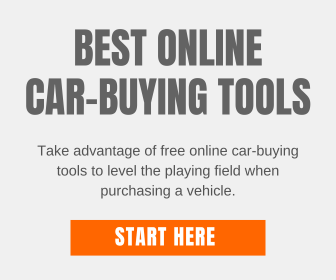Tips for Buying a Car with a Limited Budget
Learn how to navigate the car-buying journey with a limited budget and still drive off in a vehicle that exceeds your expectations!
How to Buy a Car on a Limited Budget
Buying a car on a limited budget can feel like navigating a tricky maze, where every turn presents a new challenge. Yet, it’s entirely possible to emerge victorious, clutching the keys to a vehicle that meets your needs and respects your financial boundaries.
Finding that perfect, budget-friendly car involves patience, research, and savvy shopping strategies.
Key Takeaways
- Budget, Budget, Budget: Examine your budget and figure out how much vehicle you can comfortably purchase.
- Master Research and Negotiation: Research and negotiation are vital to finding a quality car within a tight budget.
- Thorough Inspection for Used Cars: Inspecting a used car thoroughly can lead to significant savings without compromising reliability.
- Beyond the Sticker Price: Financing, insurance, and maintenance costs are crucial considerations beyond the sticker price for long-term affordability.
This article will serve as your compass, guiding you through the essentials of purchasing a vehicle with a limited budget.
Let’s embark on this ride together, discovering how to secure an economical yet reliable set of wheels.
Car Buying Tip: Shopping for a new car can be challenging, with prices often higher than expected. But there’s good news! You can get a great deal by asking for free dealer price quotes online to compare prices from local dealers.
Table of Contents
- Understand your budget
- The art of researching
- Finding the right car
- Negotiating on a budget
- Inspecting a used car
- Budget-friendly finance options
- Insurance and warranty
- Fuel efficiency and maintenance
- Alternative budget-friendly buying options
- The test drive
- Finalizing your purchase
- Frequently asked questions
- Final thoughts
Understanding Your Budget
The journey to purchasing a vehicle, whether your first or next, starts with a critical step: grasping the full scope of your budget. This initial stage goes far beyond simply eyeing the sticker price on the windshield of your dream car.
It’s about looking deeper into the financial implications of owning a vehicle, ensuring that you’re fully prepared for the road ahead, both financially and practically.
First and foremost, the sticker price is just the tip of the iceberg. It’s the number that catches your eye, but beneath the surface, there are additional financial responsibilities that car ownership brings.
Let’s break down these additional costs:
- Insurance Costs: Car insurance is a mandatory aspect of car ownership, and its cost can vary widely based on several factors, including the make and model of the car, your driving history, and even your geographical location. It’s essential to get insurance quotes for the types of vehicles you’re considering to understand how much you’ll need to budget monthly or annually.
- Maintenance and Repairs: Every car needs regular maintenance to keep running smoothly; occasionally, repairs will be necessary. These costs can increase over time, especially for older or high-mileage vehicles. Budgeting for routine maintenance and setting aside an emergency fund for unexpected repairs is crucial.
- Fuel Economy: The fuel cost can significantly impact your monthly expenses, especially if you commute long or plan to use the vehicle frequently. Cars with better fuel economy may have a higher upfront cost but can save you money in the long run. It’s essential to consider the miles per gallon (MPG) rating of the vehicles you’re interested in and estimate your monthly fuel costs based on your driving habits.
Understanding these additional costs is about painting a realistic picture of car ownership. It’s not just about whether you can afford the car payment—it’s about whether you can afford the car in its entirety, including all the associated expenses.
So, before you get swept away by the excitement of test drives and car features, take a moment to review your finances. Determine a realistic budget that includes the potential car payment and ongoing insurance, maintenance, and fuel costs.
By having a comprehensive understanding of your budget, you’re not just preparing yourself to make an intelligent purchasing decision but setting yourself up for a more stress-free ownership experience.
The Art of Research in Car Buying
Once you’ve established a clear budget, the next critical phase in your car-buying journey is to dive into research. This isn’t just any step; it’s an art form that, when done correctly, can lead to significant savings and satisfaction with your purchase.
Here’s how to approach this crucial phase:
Exploring Car Models
- Broaden Your Horizon: Consider a wide range of vehicles within your budget. Use trusted online automotive sites, consumer reports, and review platforms to gather data.
- Diverse Options: Look into different types, such as sedans, SUVs, trucks, and hybrids, to understand their unique offerings in features, safety, and efficiency.
- Online Car Shopping Tools: Utilize free online services like RydeShopper and Edmunds to search for cars, comparing models and prices conveniently from home.
Assessing Reliability
- Consumer Feedback and Expert Ratings: Investigate the reliability history of the models you’re interested in through consumer reviews and ratings from reputable sources like J.D. Power and Consumer Reports.
- Recall Histories: Check for any recall information to gauge the vehicle’s long-term reliability.
Understanding Cost of Ownership
- Beyond Purchase Price: Recognize that vehicle ownership costs include insurance, maintenance, fuel, and depreciation.
- Total Cost Insights: Use tools like Edmunds’ True Cost to Own® calculator to estimate these expenses over five years, helping you understand the long-term investment.
Value Retention Over Time
- Depreciation Rates: Some vehicles depreciate slower than others. Research which models hold their value better, as this impacts the vehicle’s cost-effectiveness if you plan to sell.
Related: How to research new cars online
- How to Buy a New Car Below Factory Invoice Price – True dealer cost and the factory invoice price are not the same… dealer cost can be much lower.
- Figure a Fair Profit New Car Offer – How to calculate a fair profit new car offer.
- How to Buy a New Car Online – Not sure where to start? Use my step-by-step guide on how to buy a new car online.
Finding the Right Car
After carefully refining your choices through diligent research, finding the perfect car shifts into high gear.
This pivotal stage aligns your budgetary constraints with your personal and lifestyle needs, ensuring your chosen car will serve you well in the long run.
Understand Your Lifestyle Needs
- Daily Commuting vs. Adventure: Consider the nature of your daily driving. Do you need a fuel-efficient compact for city commuting or an SUV for weekend adventures?
- Family Size: The size of your vehicle should complement your family size. A more prominent family might require an SUV or minivan for additional space and comfort.
- Work Requirements: If your car is a tool for your job, ensure it meets work-related needs. This could mean ample cargo space for tradespeople or a luxury sedan for corporate professionals.
Factor in Long-Term Use
- Future Changes: Consider potential lifestyle changes, such as family expansion or a new job, which might affect your vehicle needs.
- Resale Value: If you plan to upgrade in the future, consider models known for retaining their value over time.
Test Drive Is Key
- Real-World Experience: Test driving gives you a feel for the car’s performance, comfort, and suitability to your driving style.
- Feature Testing: Use the test drive to assess essential features, from brake responsiveness to the ease of using the infotainment system.
Safety and Features
- Safety Ratings: Prioritize vehicles with high safety ratings from reputable organizations like the National Highway Traffic Safety Administration (NHTSA) or the Insurance Institute for Highway Safety (IIHS).
- Essential Features: Identify which car features are non-negotiable for you, such as advanced driver-assistance systems, smartphone integration, or a rearview camera.
Seek Professional Inspections
- Pre-purchase Inspection: When buying used vehicles, have them inspected by a trusted mechanic to uncover any potential issues that could affect your decision.
Financing and Deals
- Financing Options: Explore various financing options to find one that offers the best interest rates and terms suited to your financial situation.
- Special Offers: Look for manufacturer rebates, special financing rates, or dealership promotions that can reduce the overall cost.
Real-Time Bargain Hunting: Turn to Edmunds for instant access to the latest and greatest local deals, saving you time, money, and stress.
Negotiation Tactics for Buying a Car on a Budget
Negotiating the price of a car is a critical step in ensuring you secure a deal that respects your budget while meeting your needs.
Here’s a structured approach to help you navigate through negotiations with confidence.
Do Your Homework
Take the time to do research thoroughly before entering into negotiations with a seller:
- Market Value: Understand the fair market value of the car.
- Average Selling Price: Know the typical selling price in your region.
- Vehicle History: Investigate any recalls or common issues with the model.
- Online Tools: Utilize online tools and databases for comprehensive information on the car you’re interested in.
Understand the Seller’s Position
Acknowledge the seller’s bottom line, whether dealing with a dealership or a private seller.
Dealerships might be more flexible with the following:
- Used Cars: Greater price negotiation room.
- Monthly Quotas: Eager to negotiate as the end of the month approaches.
Start Lower Than Your Target Price
Initiate with an offer below your budget to create room for negotiation.
This strategy allows you to:
- Adjust: Increase your offer in small increments.
- Negotiate: Find a middle ground that suits both parties.
Highlight Reasons for Your Offer
Justify your offer with solid reasons:
- Condition Issues: Point out any repairs or cosmetic damage.
- Market Duration: If the car has been for sale long, use this as leverage.
- Reasoning: Logical reasoning can make your offer more convincing.
Be Ready to Walk Away
Be prepared to end negotiations if terms don’t meet your expectations.
- Flexibility: Shows you’re not desperate, often leading to better offers.
- Confidence: Asserts your position in the negotiation.
Use Silence to Your Advantage
After making an offer, allow the seller to respond without immediate interjection.
- Pressure: Silence can psychologically compel the seller to consider your offer more seriously.
- Reflection: Gives both parties time to think about the offer on the table.
Finalize the Deal
Ensure all agreed-upon details are documented in writing:
- Sale Price: Confirm the final agreed price.
- Warranties and Guarantees: Note any warranties included with the purchase.
- Vehicle Condition: Acquire a record of the car’s condition at the time of sale.
Incorporating these tactics into your negotiation strategy can significantly enhance your ability to secure a favorable deal on a car that meets your financial and practical needs, ensuring a smooth and successful car-buying experience.
Inspecting a Used Car
A used car is a go-to option for many on a tight budget. Discover what to look for during an inspection to ensure you get a reliable vehicle.
Exterior Inspection
Body Condition:
- Check for rust spots, dents, and scratches.
- Ensure the body panels align correctly, as misalignment may indicate past accidents.
Tires:
- Look for even tire wear, as uneven wear can suggest alignment issues.
- Verify the depth of the tire tread.
Lights and Lenses:
- Ensure all headlights, taillights, and signal lights are intact and functioning.
Windows and Windshield:
- Check for cracks or chips in the glass.
- Test all windows to ensure they open and close smoothly.
Interior Inspection
Upholstery and Surfaces:
- Inspect for tears, stains, or excessive wear on seats and carpets.
- Check the dashboard for any cracks or sun damage.
Electronics:
- Test the radio, air conditioning, heater, and all dashboard controls.
- Ensure the instrument panel displays are fully operational.
Odors:
- Sniff for any signs of mold, mildew, or smoke that could indicate water damage or heavy use.
Mechanical Inspection
Engine:
- Look for leaks, corrosion, or anything that seems out of place.
- Check the oil and transmission fluid for cleanliness and level.
Brakes:
- Listen for noises when applying the brakes.
- Feel for vibrations or a spongy brake pedal, which could indicate issues.
Suspension:
- Push down on each corner of the car; it should bounce back once.
- Uneven car level or noises when bouncing may indicate suspension problems.
Test Drive
Performance:
- Assess acceleration, handling, and braking.
- Listen for unusual noises from the engine or under the car.
Comfort:
- Ensure the seats are comfortable and the view from the driver’s seat is adequate.
- Check for smooth shifting between gears.
Professional Inspection
- Vehicle History Report: Acquire and review the vehicle history report used by an online service such as AutoCheck.
- Consider a Professional: Even if you feel confident in your inspection, it’s wise to have the vehicle checked by a professional mechanic.
- Pre-Purchase Inspection: A mechanic can identify issues you may have missed and provide an estimate for any necessary repairs.
By thoroughly inspecting a used car before purchasing, you can avoid costly mistakes and ensure you’re investing in a vehicle that will serve you well for years.
Budget-Friendly Finance Options
Understanding your auto financing options becomes crucial when buying a car on a limited budget.
The financial landscape is about finding a loan that enables you to purchase your desired vehicle and fits comfortably within your monthly budget, ensuring you’re not stretching your finances too thin.
Exploring Different Loan Sources
- Traditional banks, while familiar, may not always offer the best rates for car loans.
- Credit unions can provide lower interest rates and personalized service but require you to be a member.
- Online lenders deliver the convenience of quick rate comparisons, though they lack the personal touch some buyers prefer.
Understanding Loan Terms
- Your loan’s interest rate and length dictate monthly payments and the total loan cost.
- Opting for a lower interest rate reduces the overall amount paid.
- Shorter loan terms lead to higher monthly payments but lower total interest, saving money over time.
Pre-approval Process
- Getting pre-approved gives you a clear budget, strengthens your negotiating position, and involves a credit check to offer a specific loan amount and interest rate.
- This step provides leverage during the car buying by setting clear financial limits.
Negotiating the Best Deal
- With pre-approval, you can negotiate more effectively, focusing on the vehicle price or loan terms.
- The objective is to secure a loan that aligns with your budget and financial goals.
Impact on Your Budget
- The financing option should fit your broader financial plan, ensuring sustainable monthly payments.
- Consider the loan’s total cost, including interest and fees, to make an informed decision.
Insurance and Warranty
Choosing the right insurance for your car is crucial to avoid overspending while staying protected. Essential coverage includes liability, with comprehensive and collision coverage offering extra security against theft and damage.
To keep costs down, compare insurers, seek discounts, and consider a higher deductible. This strategy ensures you get the best value for your money, aligning to buy a car on a limited budget.
Extended warranties can safeguard against unexpected repair costs, which is particularly valuable for used cars. However, the price should be evaluated against potential repair needs.
Opt for reliability to skip the extended warranty, saving you money without compromising security. This approach helps maintain your budget while ensuring your car is covered.
Fuel Efficiency and Maintenance
Choosing a car with excellent fuel efficiency and minimal maintenance costs is critical for saving money in the long run.
Here’s how to identify such cost-effective vehicles:
Fuel Efficiency
- Look for cars with high miles per gallon (MPG) to spend less on fuel. High MPG cars, including hybrids and electric vehicles, offer significant savings on gas.
Maintenance Costs
- Seek cars with a reputation for reliability and lower repair needs to reduce maintenance expenses. Vehicles with fewer complex features generally incur lower maintenance costs.
Quick Tips
- Use Resources: Websites like FuelEconomy.gov provide fuel efficiency data.
- Research Reliability: Consult automotive reviews for cars known for their durability.
- Certified Pre-Owned: These cars often come with warranties that can lower repair costs.
Focusing on fuel efficiency and maintenance can lead to substantial long-term savings, making it a smart strategy for those shopping on a budget.
Alternative Buying Options for a Limited Budget
Exploring alternative buying options can lead to significant savings when purchasing a car, mainly if operating within a tight budget. Beyond the traditional dealership model, auctions, private sellers, and online platforms offer unique opportunities to find great deals.
Here’s how to navigate these alternative avenues.
Auctions
Car auctions, including government and police, can be goldmines for budget-conscious buyers. Vehicles here often sell for lower than market value, but it’s vital to:
- Do Your Research: Know the car’s value and history before bidding.
- Inspect the Car: Check the car’s condition whenever possible to avoid costly repairs later.
- Understand the Process: Auctions move quickly, and catching up is easy. Set a budget and stick to it.
Private Sellers
Buying directly from a private seller can also offer cost benefits, as these sales typically involve less overhead than dealership transactions. To ensure a smart purchase:
- Verify the Vehicle’s History: Use services like CARFAX to check for past accidents or issues.
- Meet in Safe Locations: Choose public, well-lit areas for inspections and transactions.
- Negotiate: Private sellers often have more flexibility on price, making it easier to negotiate.
Online Platforms
Websites like Craigslist, eBay Motors, and Facebook Marketplace have revolutionized how people buy cars. They offer a vast selection of vehicles at various price points. When using these platforms:
- Filter Your Search: Use the platforms’ filters to narrow your options based on your budget and preferences.
- Be Cautious: Beware of scams. Always verify the seller’s information and see the car in person before paying.
- Read Reviews: If the platform offers a rating or review system for sellers, use this to gauge reliability.
Certified Pre-Owned (CPO) Programs
CPO vehicles sold through manufacturer programs combine the benefits of buying new and used. They’re inspected, refurbished, and come with warranties. While not always as cheap as other options, they offer peace of mind and reliability.
Test Driving
A test drive is an essential step in the car buying process, serving not only as a chance to see if the car suits your preferences but also as an opportunity to evaluate its condition and performance. Understanding what to look for during a test drive can help you make an informed decision.
Here is what to focus on during the test drive:
Handling and Comfort
- Steering: Check if the car responds well to steering. It should feel smooth and responsive, not stiff or overly loose.
- Braking: Pay attention to how the brakes feel and respond. They should be effective without requiring excessive force. Listen for any noises that could indicate wear.
- Suspension: Notice how the car handles bumps and uneven roads. A sound suspension system will absorb most shocks, providing a comfortable ride.
- Seat Comfort: Ensure the driver’s seat is comfortable and offers good support, especially if you plan long trips. Adjust the seat and mirrors to test visibility and ergonomics.
Engine Performance and Transmission
- Acceleration: Evaluate how the car accelerates. It should do so smoothly without hesitation or unusual noises.
- Transmission: For automatic transmissions, shifting should be seamless and hardly noticeable. Shifts should be smooth for manual transmissions, and the clutch should engage and disengage comfortably.
- Unusual Noises: Listen for any odd sounds from the engine or undercarriage. Clicking, knocking, or whining noises can indicate mechanical issues.
Technology and Features
- Tech Features: Test all the technological features of the car, including the infotainment system, navigation, Bluetooth connectivity, and air conditioning, to ensure they work as expected.
- Safety Features: Familiarize yourself with the car’s safety features, such as airbags, parking sensors, and backup cameras, and check their functionality.
Overall Feel
- Intuition: Trust your instincts. How you feel driving the car is essential. It should instill confidence and not raise red flags regarding its condition or handling.
After the Test Drive
- Inspection: Consider having the car inspected by a professional mechanic after a test drive if you seriously consider purchasing it. This can reveal any underlying issues you might not have noticed.
Related: How to test drive a used car
Finalizing Your Vehicle Purchase
Finalizing the purchase of your ideal car is a crucial step when buying a car on a limited budget, marking the transition from selection to ownership.
Ensuring a smooth transaction involves several essential steps to protect your interests and investment.
Follow these steps when finalizing your car purchase.
Negotiate the Final Price
- Final Offer: Use your research and any inspections to negotiate the final sale price. Remember, there’s often room to negotiate on used cars, especially if you’re dealing with a private seller.
Review and Secure Financing
- Loan Approval: If financing the purchase, ensure your loan approval is in place. Double-check the terms, interest rates, and monthly payment amounts.
- Payment Method: Confirm the payment method for the car, whether it’s through financing, a cashier’s check, or a direct bank transfer.
Inspect the Paperwork
- Title and Registration: Verify that the seller has a clear title to the car and that the registration documents are ready for transfer.
- Bill of Sale: This document should include the final sale price, the VIN, and the buyer and seller’s information.
- Warranty and Service Records: If applicable, request the warranty documents and any service records to understand the vehicle’s maintenance history.
Transfer Ownership
- Title Transfer: Complete the title transfer with the seller. This step officially changes the vehicle’s ownership.
- Registration: Register the vehicle in your name at the local DMV. This may involve paying a registration fee, receiving a new license plate, or transferring your existing one.
Insurance Coverage
- Insurance Policy: Secure an insurance policy before driving the car off. Proof of insurance is required for registration in most states.
Final Vehicle Inspection
- Pre-Delivery Inspection: Conduct a final inspection of the car before taking possession. Ensure that the vehicle is in the agreed-upon condition and that all agreed-upon repairs or modifications have been made.
Collect Important Documents
- Keys and Manuals: Ensure you receive all sets of keys, the owner’s manual, and any other relevant documentation related to the vehicle.
Post-Purchase Actions
- Service Appointment: Consider scheduling an initial service appointment to ensure your new car is in top condition.
- Review Vehicle Functions: Familiarize yourself with all the vehicle’s features and operational aspects, adjusting settings to your preference.
By meticulously following this checklist, you can confidently navigate the final stages of purchasing your car, ensuring that all legal, financial, and administrative aspects are addressed for a seamless transition into car ownership.
This careful approach secures your investment and sets the stage for a rewarding ownership experience.
FAQs About Limited Budget Car Buying
How can I find a reliable car within my budget?
Start by clearly defining your budget, including purchase price and future operational costs. Use online resources to research models known for reliability and longevity within your price range. Consider certified pre-owned vehicles for additional reliability assurance through manufacturer-backed warranties.
What are the best tactics for negotiating car prices?
Research the car’s market value to understand your negotiation baseline. Start your offer below the asking price to give yourself room to negotiate up. Be knowledgeable about the car’s condition and use any flaws as leverage. Express willingness to walk away if the price doesn’t meet your expectations, and always be prepared to explore multiple options.
How do I assess a used car’s condition?
Conduct a thorough exterior and interior inspection for signs of wear, damage, or repairs. Check under the hood for leaks or corrosion, and review the vehicle’s history report for any accidents or major repairs. Finally, consider getting the car inspected by a trusted mechanic for an unbiased assessment of its condition.
Are online car buying platforms safe to use?
Many online car-buying platforms are safe and provide convenient access to a wide range of vehicles. Ensure the platform is reputable by reviewing its fraud prevention processes. Always verify the seller’s information and view the car in person before purchasing.
How important is fuel efficiency in saving money?
Fuel efficiency directly affects ongoing vehicle expenses. Choosing a vehicle with high miles per gallon (MPG) can lead to significant fuel cost savings over time, making it an essential consideration for budget-conscious buyers, especially those with lengthy commutes.
How can I ensure my car has a low maintenance cost?
Select models are known for durability and low repair costs. Regular maintenance, such as oil changes and tire rotations, can prevent costly repairs. Also, simpler vehicles with fewer electronic gadgets tend to have lower maintenance expenses. Reading consumer reports and owner forums can provide insights into potential maintenance issues and costs.
Finding Your Ideal Car Within a Budget: Essential Strategies
Buying a car on a limited budget doesn’t have to be daunting. With focused research, patience, and a clear understanding of your financial limits and needs, you can navigate the market to find a great vehicle that fits your budget.
This article has laid out key strategies to help you make informed choices without overspending. Remember, a tight budget doesn’t limit your options; it simply means you must shop smarter.
By prioritizing your needs and staying patient, you’ll discover that the market offers numerous options that meet your criteria without breaking the bank. It’s about leveraging your resources wisely and not rushing your decision. The journey to purchasing a budget-friendly car involves strategic planning and savvy shopping.
In essence, approaching car buying with a budget leads to exploring more options and deciding to balance cost with satisfaction. Armed with the insights from this guide, you’re ready to find a car that doesn’t just serve your immediate needs but is also a prudent financial choice. A limited budget is an opportunity to shop with intention, ensuring you get the best value.
















